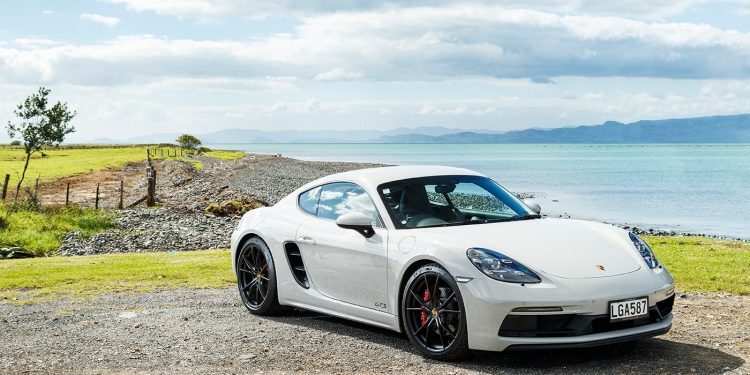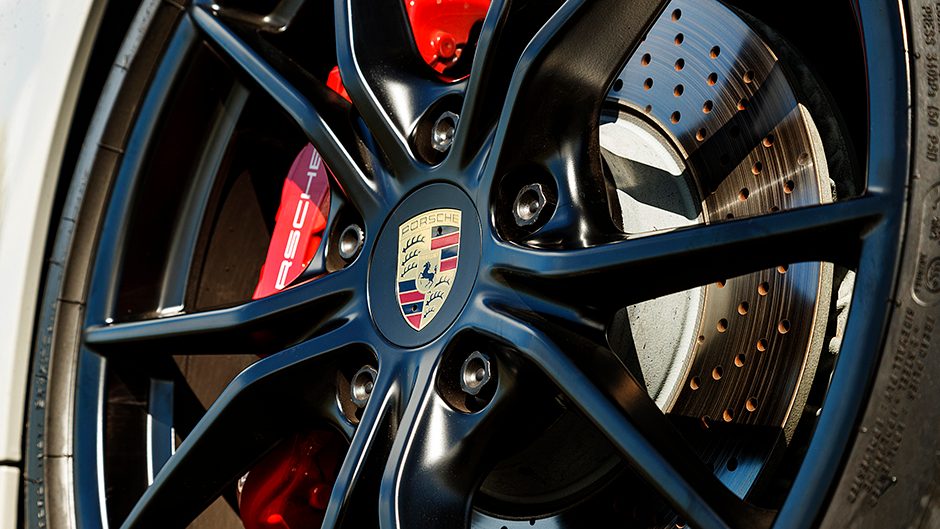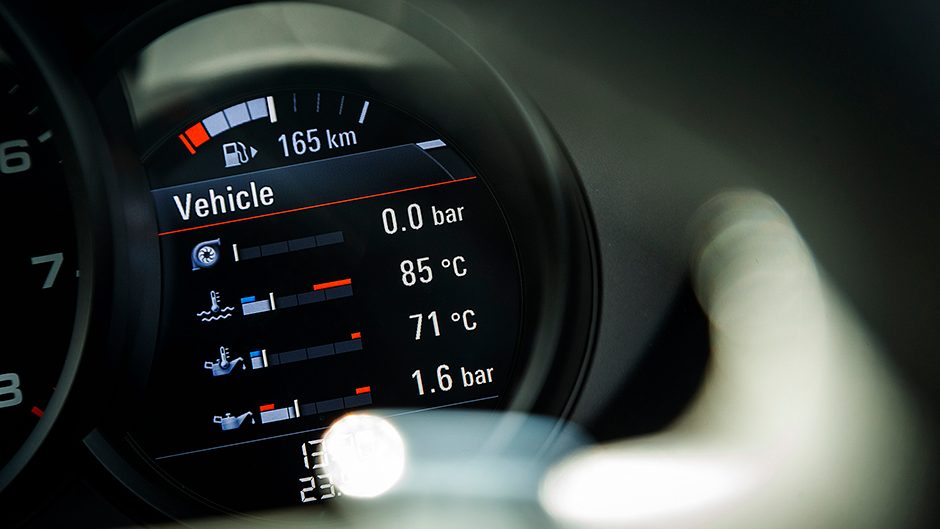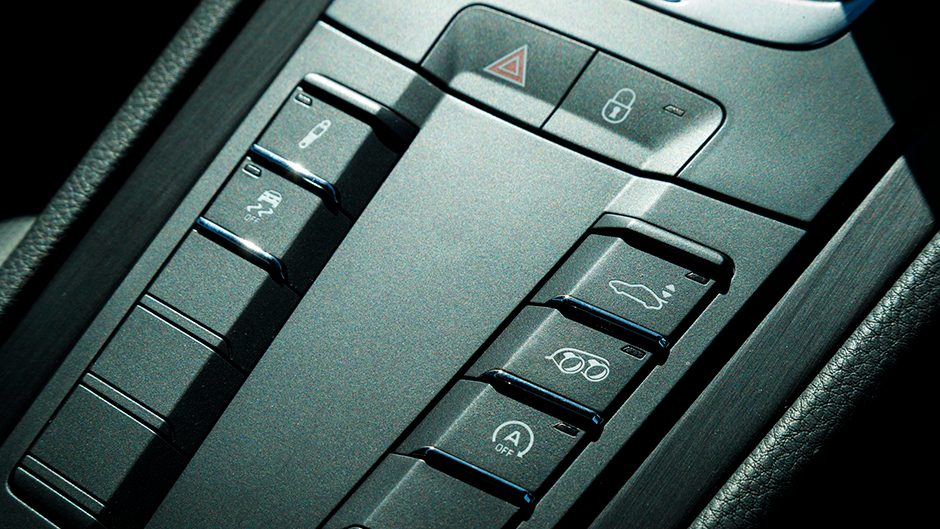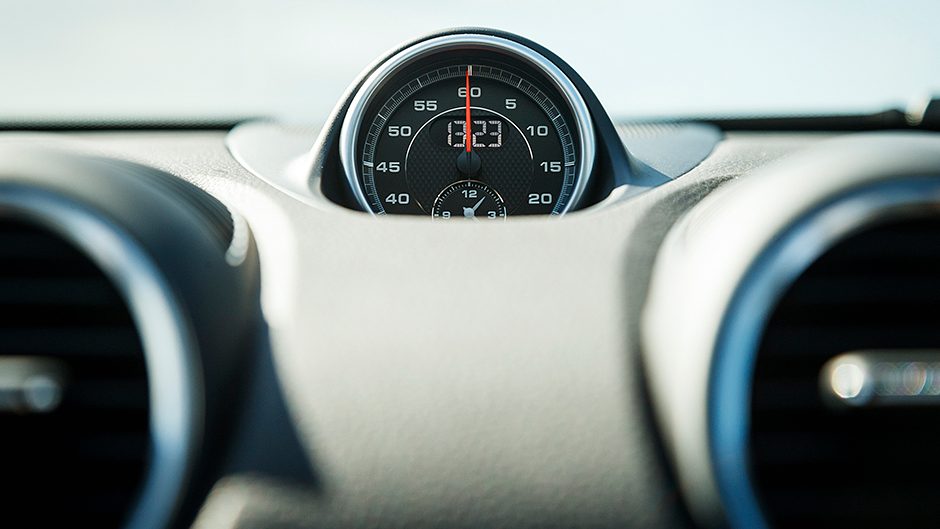2018 Porsche 718 Cayman GTS review
Words Kyle Cassidy | Photos Tom Gasnier
It’s now a given that Porsche will add a GTS variant to each of its model lines, and it’s the 718 Cayman’s time to be turned up a notch. We get to grips with this cornering phenomenon.
Porsche turns 70 this year, and unlike most septuagenarians, it’s fighting fit and embracing change with its push into electrification. But it’s Porsche’s sports cars that everyone still loves, and this 718 Cayman GTS is one that channels the founding ideals of the company. Allow me to indulge in a little history.
It was 1948 when Dr Porsche built his first car, a mid-engined roadster with the chassis number 356-001. Mimicking ‘Number 1’, Porsche’s early racers, like the 550 Spyder, adopted the optimal mid-engined layout, and this was later developed into the 718, which is referenced by the new models. In 1964, the 904 Carrera debuted the GTS badge, attached to a road racer coupe with a feisty four potter.
And 53 years later, that’s a good way to describe the latest Cayman range topper. Following the now familiar GTS playbook, the top 718 Cayman gains more power and poke from its 2.5-litre turbo thanks to a new intake delivering more air to the revised turbo. This still features its unique (for a turbopetrol) variable turbine geometry, but in the GTS it gets a bigger compressor and an increased tolerance for boost, now blowing up to 1.3bar.
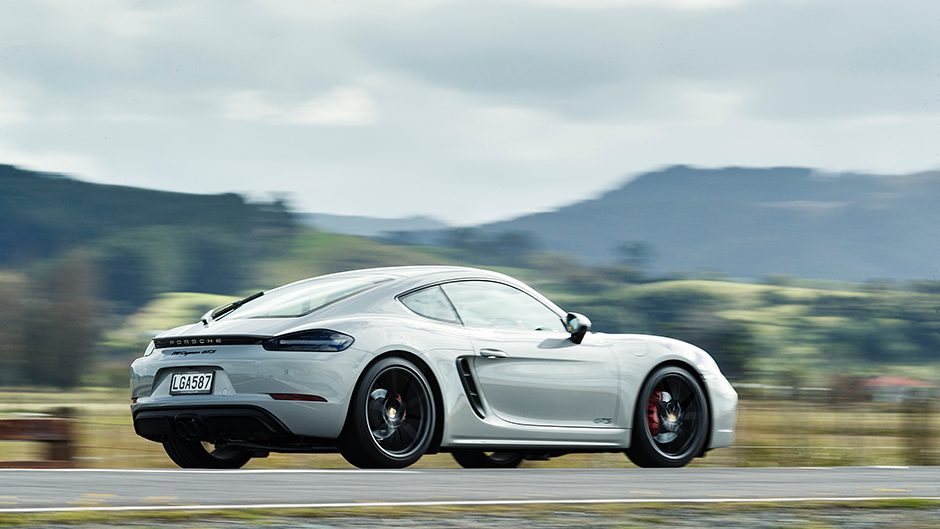
That gains you 11kW over the current S or, if you have the old six-cylinder GTS, it totals 26 more at 269kW. Torque has increased too, with 420Nm (manual) or 430Nm with the twin-clutch auto that everyone buys, and that’s on tap from 1900rpm through to 5000.
The Sport Chrono pack, which adds a layer of go-faster drive modes via software tuning, is standard here and with everything optimised for speed, this GTS is said to cut to 100km/h in 4.1sec. When it comes to performance, a Porsche is never mercurial. They always live up to their claims, without fail, repeatably.
Were we surprised at how easily the GTS registered 100km/h in 4.1sec, as verified by the GPS timer? Not really, it’s expected. The launch process sees 6500rpm dialled up and as you release the brake, the engine’s forces are delivered to the rears with a magnificent mix of mechanical and electrical wizardry. That it can fire off such launches repeatedly in quick succession is a testament to Porsche’s engineering prowess.
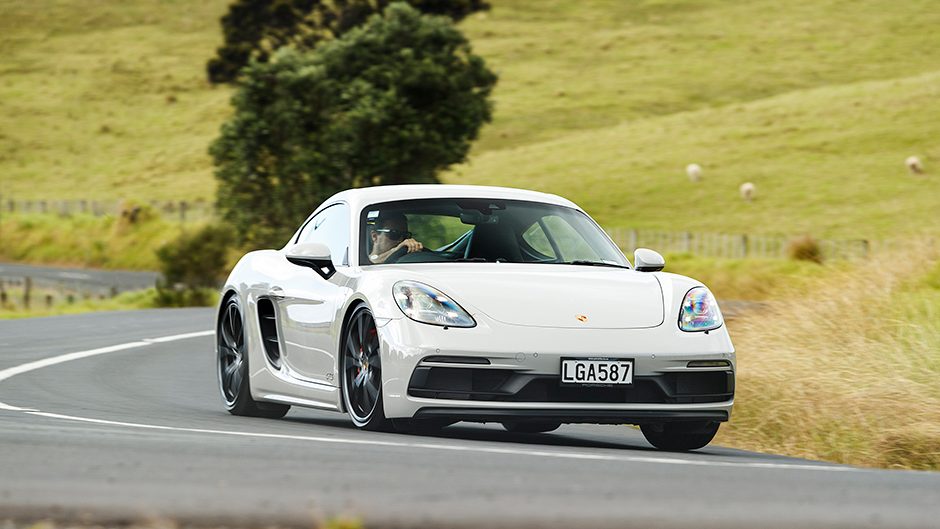
Cornering capers
But the Cayman’s thing isn’t really straight line speed, it’s more about consuming corners. The GTS sits lower with the standard fitment of adaptive dampers, PASM in Porsche speak, while the optional Sport Chassis lowers it a further 10mm. Part of the Sport Chrono pack includes dynamic gearbox mounts, which stiffen in Sport mode to minimise the effects of the powertrain moving about during dynamic manoeuvres.
Another added extra is a torque vectoring function for the rear axle. Helping cornering duties, the system will nip the brake on the inside rear wheel, the ESP working with the mechanical diff lock to ensure it’s a seamless process. With a relatively lithe 1460kg suspended between the four wheels, and with 56 per cent of it carried on the rear axle, this Cayman really does chomp through curves.
All the elements are present for ultimate cornering zen with mass riding low on firm yet compliant suspension and steering that’s precise, perfectly weighted and quick. The interaction is carefully judged and with the optional Power Steering Plus set-up, a helpful resistance builds as the action gets hotter. The torque vectoring aids in annihilating apexes, helping it turn more quickly and allowing faster corner exits. This is abnormally excellent through the bends.
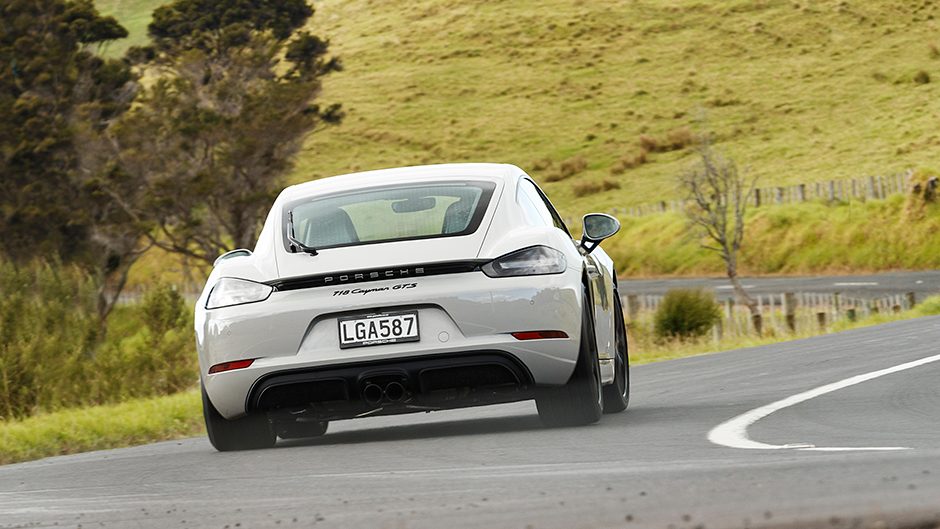
The 718 is sized about right for Targa-type roads, not too wide for when lanes narrow or too low to risk bottoming out. The brakes naturally are sound performers, with a strong and consistent response.
Fat torque
This is pretty slick between the curves too, the fat torque curve seeing max pull on tap until 5000rpm, when the horses really start bolting. It keeps cranking out the power as the tacho spins around past 7000rpm and the throttle response is particularly notable for such an engine, only the uptick in go from around 2000rpm giving it away as turbocharged. It sounds interesting too, in a gnashing of mechanicals type way. The seven-speed PDK is the engine’s master, whipping it along in Sport mode with gears held or swapped just about perfectly for every occasion on-road; we hardly bothered with the shift paddles.
The Sport Plus setting is best reserved for track adventures, for it finds more of the bumps via a stiffening of the shockers and the gearbox is a tad frenetic with its changes. The GTS has a sports car’s ride in Normal mode, yet it still manages to ride the bumps nicely. That’s pretty trick considering it uses humble struts front and rear. While the big Michelin’s help generate big G-forces, in concert with our coarse chip highways, they make a right din too. Touring would prove a noisy affair in this GTS. It’s the one downside of an otherwise spellbinding driving device.
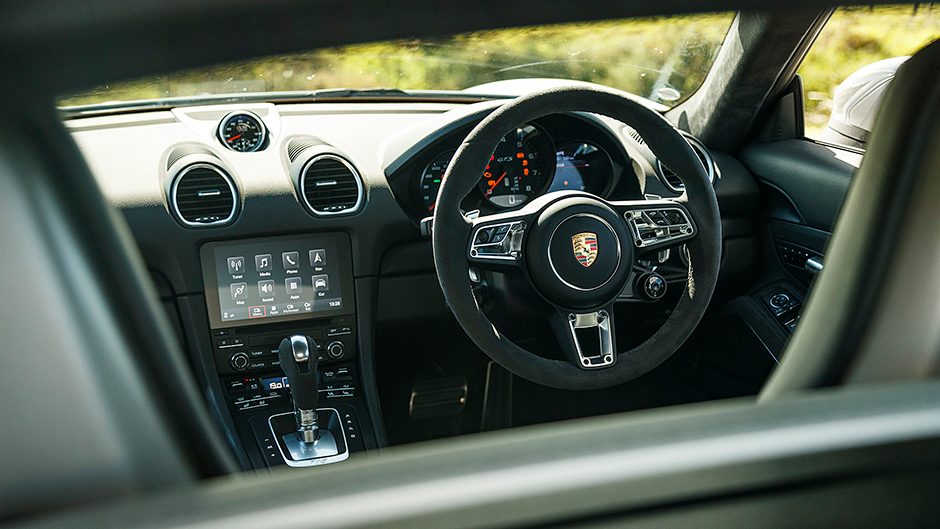
Polished PDK
We like how the 718 doesn’t garner too much attention from the general public; it’s not overly loud in its visual manner. On the practical side (if a two-seat sportster can ever be considered practical) it’s surprising how much you can squeeze into the two luggage holds of the Cayman. There’s minimal storage in the cockpit but Porsche does make a nice cabin.
Like all low lying machines, it’s all but impossible to see past all those SUVs at intersections but with smallish dimensions and a handy turning circle, commuting and parking are otherwise easy, especially with the two-pedal driving convenience of the PDK. Porsche’s twin-clutch gearbox is renowned for its ultimate performance but it also handles the daily routine with relative polish.
The GTS is happy just pootling about, the 2.5-litre engine far less grumpy below 2000rpm than the 2.0-litre in the base 718s. Although the stop/start and coasting functions are overly active in the default drive mode, both are neutralised by activating the Sport mode, and this is how the GTS does feel best, even around town. The quoted average consumption is 8.2L/100km though factor on something in the tens to teens, which isn’t bad for the pace on offer.
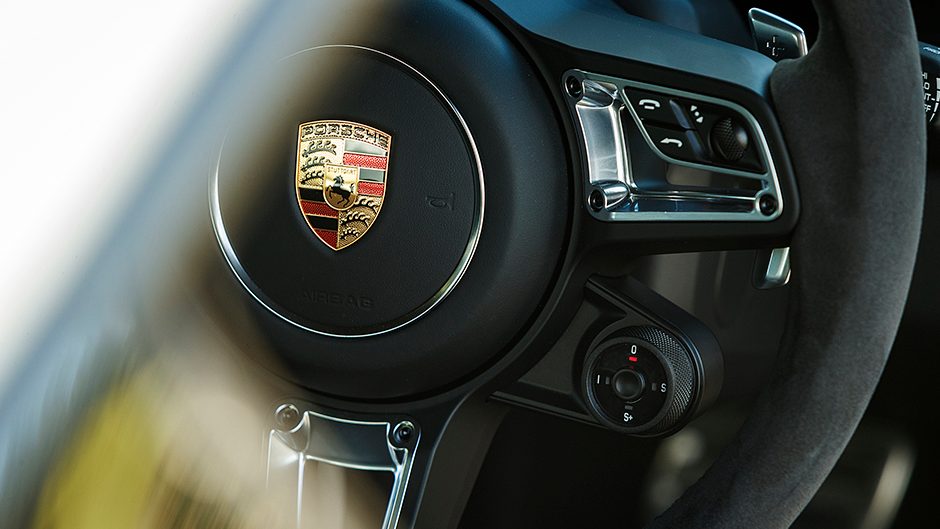
Quiet GTS visual tweaks
Marking it out, the GTS gains subtle front and rear end styling tweaks and blacked out detailing including the 20s and the central exit exhaust pipes. Just watch those when you’re loading the boot after a bit of blasting; these can be leg-hair searingly hot. The GTS also comes with the sports exhaust, with an active flap which allows you to mute its outputs in Sport mode.
Inside there’s lots of Alcantara, unless you option the leather sports seat as fitted here. Speaking of extras, Porsches are never cheap or particularly well specified in the scheme of things. The GTS starts at $176,400, $28k more than the S and with the addition of a few options, the sticker price swells to $205,600.
The PDK is an additional $6240, and others like a smart key, parking sensors with a rear view camera and blind spot monitoring add thousands, as do the sport seats, Bose sounds and LED headlights. Like the paint colour? It’s called Crayon and costs just over $5k.
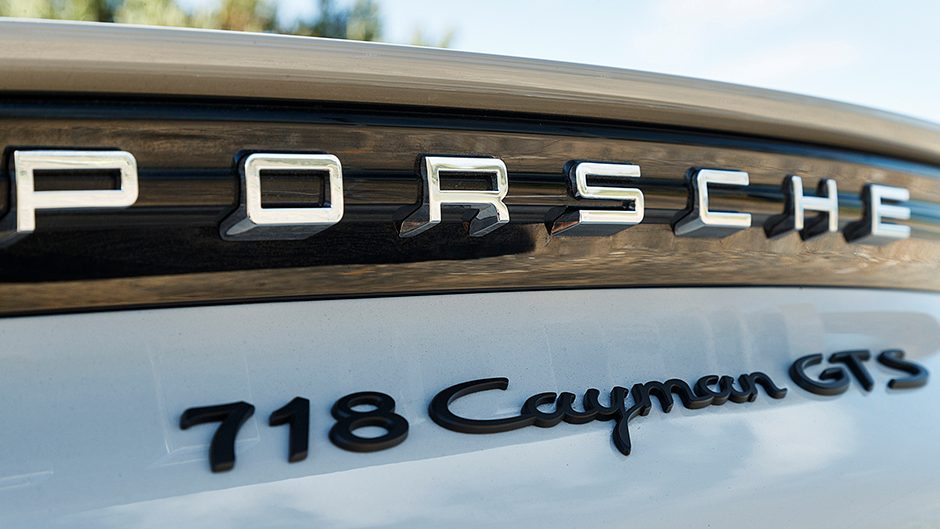
So why buy the GTS when the S is already pretty handy? While Porsche says the new GTS is 13 seconds faster around the Nürburgring Nordschleife than the old model at 7mins 40, it’s only two seconds quicker overall than the 718 S.
It’d be nice to have to face such a conundrum, but buy the GTS simply because you can, and it’s the best Cayman to be had. Until they do a new GT4 version.


